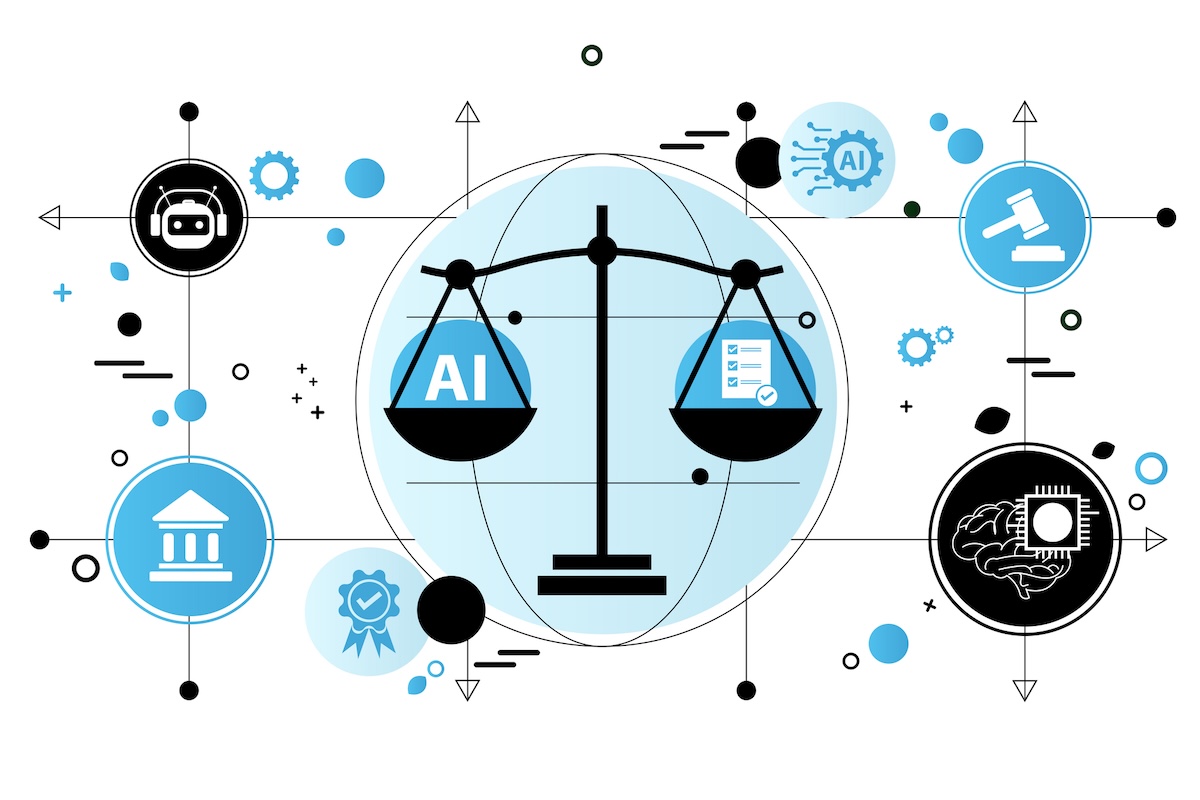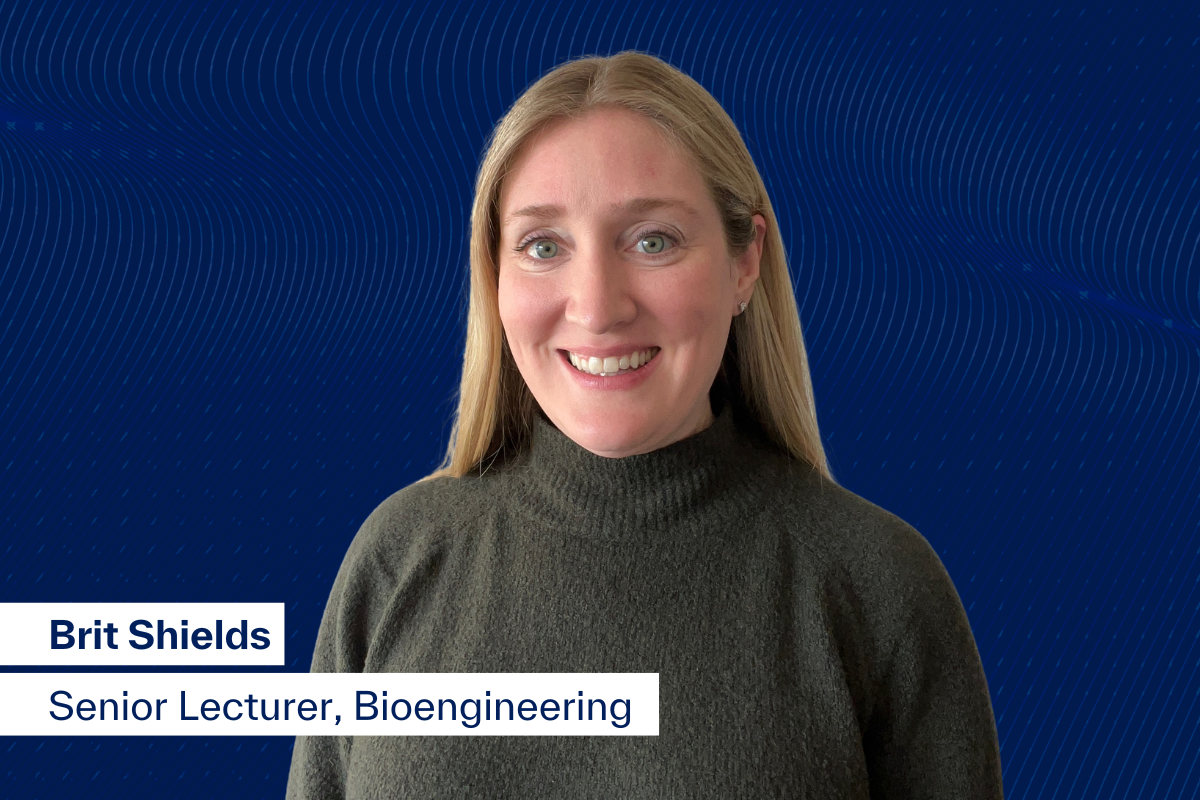
Imagine that a company develops a new, more sustainable type of concrete. One day, a bridge built using the material collapses, injuring an elderly woman.
Her family sues the concrete manufacturer, arguing that the novel material directly contributed to her injuries. If the company followed all applicable regulations, who is at fault?
The mock trial takes place in a seminar classroom in Williams Hall, on a chilly Thursday in February. “We based our decisions on existing standards for constructing and maintaining the bridge,” says one Penn Engineering student, representing the company.
“You say you’re a sustainable concrete company,” counters another student, representing the plaintiffs, “but it seems like you didn’t know much about the materials you were using!”
Teaching students to navigate situations like this — where the messy reality of implementing a new technology collides with the ever-changing regulatory environment and human well-being — is precisely the point of EAS 2030: Engineering Ethics.
“The goal of this course isn’t to tell students what’s right or wrong,” says Brit Shields (Gr’15), a senior lecturer in Bioengineering (BE), who has taught the course since 2015. “It’s to give them the tools to engage with ethical questions in a meaningful way.”
A Foundation for Responsible Innovation
Last year, Vijay Kumar, Nemirovsky Family Dean of Penn Engineering, launched the School’s Responsible Innovation Initiative, in which Shields’ work plays a key role. “Thinking through the broader societal implications of technical decisions is a crucial part of our vision for what it means to be a Penn Engineer,” says Kumar. “And that foundation starts in the classroom.”
As Shields puts it, her goal is to equip each Penn Engineering graduate with practical knowledge: “I call it the ‘ethics toolkit’ — a foundation of vocabulary, skills, historical precedents and contemporary case studies.”

In addition to EAS 2030, which is open to all engineering majors, Shields also teaches ethics within the BE department, where she has spent half a decade — in collaboration with a select group of “Engineering Ethics Fellows,” drawn from BE graduate programs — embedding ethics modules into every year of the curriculum. “That allows you to get very content-specific,” she says.
BE sophomores, for instance, have to think about concepts like user error when developing bone cement for use in orthopedic surgeries. “You might be creating this cement in a controlled laboratory environment,” Shields points out. “But what are the practical realities of how it will be transported and used? How long is that cement going to be sitting on the operating table?”
Engineering Meets the Humanities
As one of the few Penn Engineering faculty members with a background in the humanities — she received her doctorate in the History and Sociology of Science at Penn— Shields brings a unique perspective to the classroom.
Traditionally, engineering courses are not known for having a wide range of possible “right” answers — there are only so many ways to solve a partial differential equation.
But, by borrowing pedagogical techniques from the humanities — like group discussions, reading texts with different perspectives, and role-playing activities — Shields has created a space for students to explore the nuance of complicated topics like gene editing, animal testing and more.

“It’s really rare to have recitations where students can voice their opinions,” says Aria Huang, a doctoral student in Bioengineering who serves as an Engineering Ethics Fellow.
Ultimately, the goal is to help engineering students learn how to navigate a landscape that will continue to shift throughout their careers.
“Ethics is not just what is a good and a bad decision,” says Adelheid Voskuhl, Associate Professor in History and Sociology of Science in Penn Arts & Sciences, who regularly collaborates with Shields on academic research in engineering education. “The question is how to live your life.”
Impact Beyond the Classroom
For recent alumni of Shields’ courses, the impact of thinking through ethical dilemmas is apparent, because the real world rarely resembles the classroom.
“I used to view intelligence as getting to the right answer,” says Khadijah Koroma (SSE’23), who took EAS 2030 during her senior year. “But part of being intelligent and bringing out the best in your peers is being able to have a discussion where there is no right answer yet.”
Today, Koroma works at McKinsey, where she regularly addresses business challenges that require carefully listening to a wide variety of stakeholders, all of whom have different perspectives.
“Taking a step back to gather the full picture for the client and the firm is really important,” she says. “Being able to figure out what matters the most for the most people and articulate that well has been essential for my career.”
Inspired, in part, by her experience in EAS 2030, her favorite class at Penn Engineering, Koroma now plans to apply to law school. “I want to be able to figure out the best solution to an issue for as many people as possible through the lens of the law,” she says. “This class expanded my horizons of what’s possible.”
More than Just a Requirement
The rapid pace of technological change makes teaching ethics all the more important. “Students need to have these critical thinking skills to be good engineers,” says M. Susan Lindee, Janice and Julian Bers Professor of History and Sociology of Science and Shields’ doctoral advisor.
To keep abreast of changes in technologies like AI and gene editing, Shields encourages Engineering Ethics Fellows to bring their own research interests into the classroom. “It’s quite unique,” says Disha Vaswani (BE’25), a master’s student and Engineering Ethics Fellow. “If you serve as a teaching assistant in a traditional course, by contrast, your role is fairly limited, because the curriculum is fixed.”
Mansi Kumar (BE’24), also a master’s student and Engineering Ethics Fellow, introduced her students to ethical questions raised by AI in healthcare via a recently published academic paper. “Watching them engage so deeply was incredibly rewarding,” she says.
For Shields, the greatest reward is seeing students move beyond the mindset that ethics is just another course requirement. “Some students come in thinking, ‘I just need to check this box,’” she says. “Then they walk away realizing that understanding the human, societal and regulatory contexts of their work actually makes them better engineers.”
To learn more about Responsible Innovation at Penn Engineering, please visit the initiative’s webpage.
